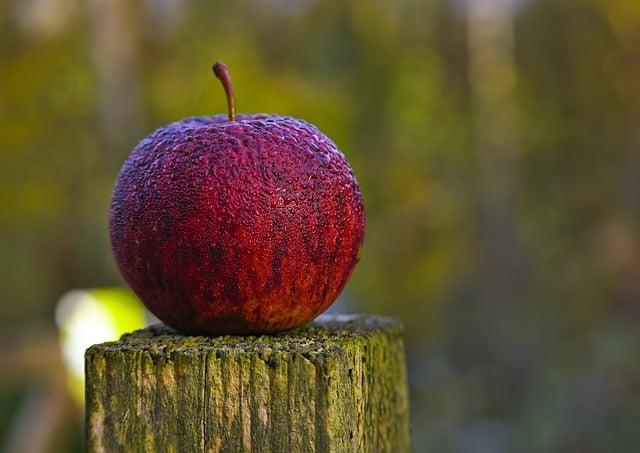On Christmas Day in Spain, the air is filled with the aroma of roasted lamb and the sweet scent of turrón, a nougat made from almonds and honey. Families gather around the table, where a vibrant spread awaits: succulent seafood, rich paella, and the beloved jamón ibérico. As laughter echoes, they toast with glasses of Cava, the sparkling wine that adds a festive sparkle to the occasion. The meal stretches into the evening, a tapestry of flavors and traditions, binding generations together in a celebration of love, joy, and culinary delight.
Table of Contents
- Traditional Delicacies That Define Spanish Christmas Feasts
- Regional Variations: A Culinary Journey Through Spains Christmas Traditions
- Sweet Indulgences: The Desserts That Sweeten the Holiday Season
- Festive Beverages: Toasting to Christmas with Spanish Spirits and Wines
- Q&A

Traditional Delicacies That Define Spanish Christmas Feasts
During the festive season, Spanish families gather around tables laden with an array of traditional dishes that reflect the rich culinary heritage of the country. One of the most iconic dishes is **Turrón**, a nougat made from almonds and honey, often enjoyed as a sweet treat after meals. Another beloved delicacy is **Polvorones**, crumbly almond cookies that melt in your mouth, typically served alongside a warm cup of hot chocolate. Additionally, **Marzipan**, crafted from ground almonds and sugar, takes center stage in many households, often shaped into delightful figures that add a whimsical touch to the celebrations.
As the main course approaches, the feast often features **Cordero Asado**, or roasted lamb, which is a staple in many regions, symbolizing abundance and prosperity. In coastal areas, **Pescado** (fish) is also a popular choice, with dishes like **Bacalao** (salted cod) making an appearance. To accompany these savory delights, families may serve **Ensalada de Nochebuena**, a vibrant Christmas salad made with seasonal ingredients such as pomegranate, oranges, and nuts, offering a refreshing contrast to the rich flavors of the main dishes. Each bite of these traditional delicacies not only satisfies the palate but also weaves together the stories and customs that define Spanish Christmas celebrations.

Regional Variations: A Culinary Journey Through Spains Christmas Traditions
Spain’s Christmas culinary landscape is as diverse as its regions, each offering unique flavors and traditions that reflect local culture and history. In Catalonia, for instance, families gather around a festive table featuring **canelons**, a dish of baked pasta filled with leftover meat from the Christmas feast. Meanwhile, in the Basque Country, the holiday season is marked by the indulgent **bacalao al pil-pil**, a cod dish that showcases the region’s love for seafood. In Andalusia, the sweet treat of **turrón**, a nougat made from almonds and honey, takes center stage, often enjoyed alongside a glass of **anís**, a traditional anise-flavored liqueur. Each region’s specialties not only tantalize the taste buds but also tell a story of local ingredients and customs passed down through generations.
As you travel through Spain during the festive season, you’ll discover that the Christmas table is a canvas painted with regional pride. In Galicia, the feast often includes **mariscos**, or seafood, reflecting the region’s coastal bounty, while in Valencia, the **pavo trufado** (truffled turkey) is a holiday favorite, showcasing the area’s agricultural richness. The Canary Islands bring their own flair with **potaje de berros**, a hearty watercress stew that warms the soul during the cooler months. Each dish is a celebration of local flavors, inviting everyone to partake in a culinary journey that transcends borders and unites families in the spirit of Christmas.

Sweet Indulgences: The Desserts That Sweeten the Holiday Season
As the holiday season unfolds, the sweet aromas of traditional Spanish desserts fill the air, creating an irresistible atmosphere of celebration. One of the most beloved treats is **Turrón**, a nougat made from almonds, honey, and egg whites, often enjoyed in various textures, from soft to hard. Another festive favorite is **Polvorones**, crumbly almond cookies that melt in your mouth, typically dusted with powdered sugar. These delightful confections are often accompanied by **Mantecados**, which are similar but made with lard, giving them a rich flavor that perfectly complements the holiday spirit.
In addition to these classics, **Roscón de Reyes** takes center stage on Epiphany, a ring-shaped cake adorned with colorful candied fruits, symbolizing the jewels of a crown. Inside, a hidden figurine and a dried bean add an element of surprise, making it a fun tradition for families. For those with a penchant for chocolate, **Churros con Chocolate** are a must-have, especially when dipped in thick, rich chocolate sauce. Each of these desserts not only satisfies the sweet tooth but also embodies the warmth and joy of the holiday season, bringing families together around the table to share in the festive cheer.

Festive Beverages: Toasting to Christmas with Spanish Spirits and Wines
As the festive season unfolds, Spanish tables are adorned not only with sumptuous dishes but also with an array of delightful beverages that elevate the Christmas spirit. **Cava**, the sparkling wine from Catalonia, is a staple during celebrations, often enjoyed as a refreshing aperitif or paired with the traditional seafood dishes that grace many holiday feasts. Its effervescence mirrors the joy of the season, making it a perfect toast to family gatherings. Additionally, **Sherry**, particularly the rich and nutty varieties like Oloroso or Pedro Ximénez, finds its way into the hearts and glasses of many, complementing the savory flavors of roasted meats and rich desserts alike.
For those seeking something warmer, **Spanish hot chocolate** is a beloved choice, especially when served alongside churros for a sweet treat after the main meal. This thick, velvety drink is perfect for cozying up on chilly winter nights. Furthermore, **Spanish brandy**, such as **Brandy de Jerez**, offers a smooth finish to the festive dining experience, often enjoyed neat or in a warming cocktail. The combination of these spirited beverages not only enhances the culinary delights of Christmas Day but also fosters a sense of togetherness, as families raise their glasses in celebration of tradition and love.
Q&A
-
What is the traditional Christmas meal in Spain?
On Christmas Day, many Spanish families enjoy a festive meal that often includes:
- Roast lamb or goat: A popular choice, especially in regions like Castilla.
- Seafood: Dishes like prawns or fish are common, particularly in coastal areas.
- Various appetizers: Including cured meats, cheeses, and olives.
-
Are there any special desserts served during Christmas?
Yes! Traditional desserts include:
- Turrón: A nougat made from almonds and honey.
- Polvorones: Crumbly almond cookies that melt in your mouth.
- Roscón de Reyes: A sweet bread typically enjoyed on Epiphany, but often found during the holiday season.
-
Do Spanish families celebrate with any special drinks?
Absolutely! Common beverages include:
- Spanish wine: Especially red wine from regions like Rioja.
- Cava: A sparkling wine that adds a festive touch.
- Hot chocolate: Often served with churros, especially for dessert.
-
Is there a specific time for the Christmas meal?
Yes, the Christmas meal is typically served in the afternoon or evening, often starting around:
- 2 PM to 4 PM: For lunch, which can be a lengthy affair.
- 8 PM to 10 PM: For dinner, especially on Christmas Eve, leading into Christmas Day celebrations.
As the sun sets on Christmas Day in Spain, families gather around tables adorned with festive dishes, sharing laughter and love. From rich stews to sweet treats, the culinary traditions reflect a vibrant culture, making each bite a celebration of togetherness.




